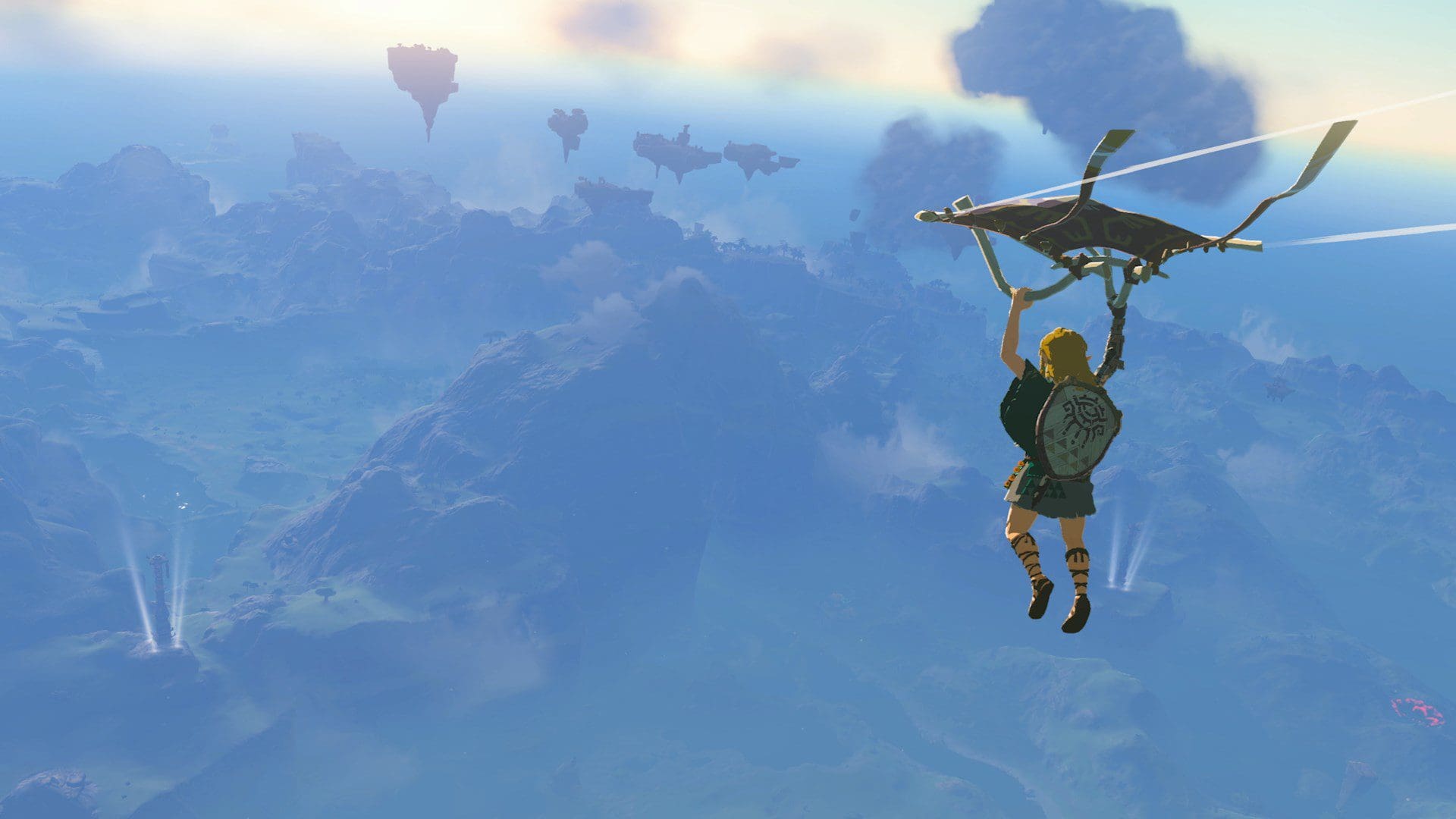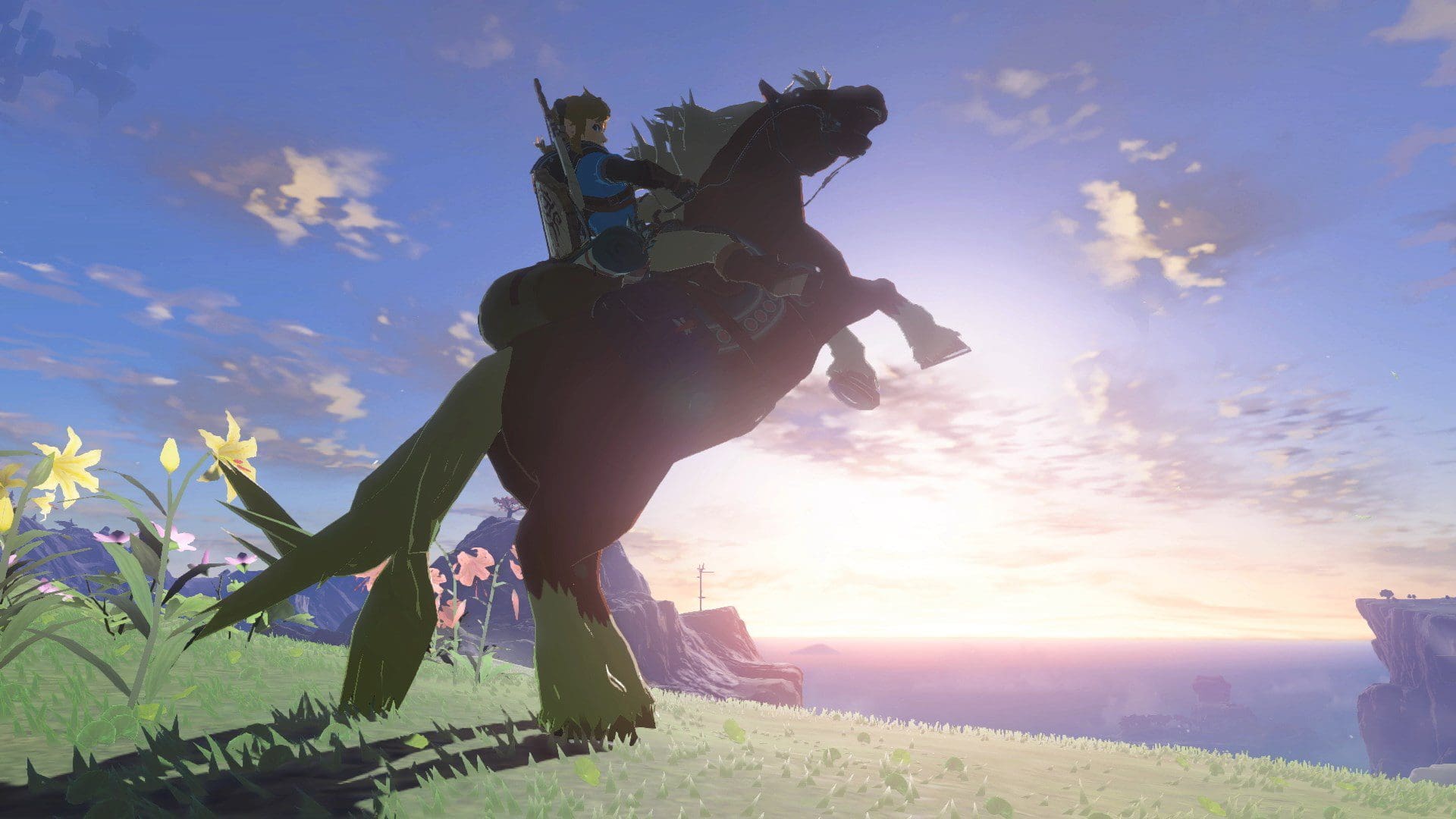
Written by Max Kahn
The Legend of Zelda: Tears of the Kingdom had to climb a mountain of its own to succeed its predecessor. Released on March 3, 2017 alongside the Nintendo Switch, The Legend of Zelda: Breath of the Wild started the Switch and ended the Wii U strongly. Now, over six years later, the long-awaited sequel has finally been released. Would it go above and beyond the first title, or is it just another rehashing?
Obviously being a sequel, one of the biggest worries about Tears of the Kingdom is just how similar it would be to its first entry. At first glance, it seems nearly identical. The UI and menus are the same, and the models and art style are unchanged except for minor character design tweaks. Even the basic combat and movement seemed the same. Yet, as the game teaches the player, there is much more than just the surface. The main gameplay addition comes in the form of Link’s new abilities, which replace the Sheikah Slate from the first game.
Link’s most prominent and essential new ability is dubbed the Ultrahand. This allows the player to move around objects, turn and rotate them around, and even fuse them together. While it may seem limited when all you have available is some tree logs and rocks, more and more options are opened up to the player over time. Within just a few hours, players will be soaring in fan-powered gliders, driving around in a plank of wood with some wheels on it, and smacking around enemies with a giant boulder club. But, by the end, those creative enough will be creating entire tanks with the power to wipe out bosses and hordes of enemies. The Ultrahand system is an incredibly simple concept, but the advanced physics of the game along with the variety of objects and their uses make it a system that gives Tears of the Kingdom an identity of its own.

That is not the only ability at Link’s disposal. Along with the Ultrahand, he also has three essential others. The Fuse ability is all about Link’s own weapons in combat. This can range from just slapping a giant rock on a small stick to destroy rocks, doubling up on a spear for increased range, or even fusing enemy drops or special plants with basic weapons to enhance their attack power. It is another simple mechanic that opens up Link’s own personal repertoire, and especially helps when dealing with the game’s weapon breaking system.
Link’s other two abilities are Recall and Ascend. While these are rather limited compared to the other two abilities, they still have their own capabilities. Recall allows Link to send an object back to its previous area. So, if a giant mysterious rock falls from the sky, just use Recall on it, and it will go all the way back to where it came from. Ascend simply allows Link to rise up into a ceiling, and emerge from the other side. While that is about as far as its uses go, it is especially useful for getting out of tricky areas or when lost venturing through a deep cave.
However, all of Link’s abilities would mean nothing if there was no world to explore. Here, Hyrule has never been bigger. Tears of the Kingdom’s major selling point in its trailers was allowing Link to take to the skies, and explore various sky islands present throughout Hyrule. These beautiful islands sport a rich orange autumn color scheme, which is a good contrast to the greens and blues of the surface world.

Whether you decide to travel across the fields of Hyrule on your makeshift car or soar through the skies on a glider with rockets and fans, there is no right or wrong way to play Tears of the Kingdom. If you have an idea, just slap some wood boards, poles, and any other object together to see how close you can replicate it. Within just a couple days of the game’s release, players already began constructing mechs with laser cannons, giant flaming stick men, and even drones.
This is all complimented by a simple control scheme that is identical to Breath of the Wild, although some buttons do different actions to fit the game’s new mechanics. Bad controls can ruin the experience of a game, but thankfully Tears of the Kingdom allows the player’s hands to easily glide across the controller in even the most stressful of situations. However, these controls cannot be changed at all, except for switching B and X, which are originally mapped to running and jumping respectively.
While the standard controls are comfortable and designed in a way for some mechanics and menus to function smoothly, at least having the option to change them in-game would have been a welcome addition that most modern games include (players at least have the option to completely change button mapping in the Nintendo Switch’s system options). Another instance of conforming the player to a certain experience is the lack of an option to change sound mixing. While a minor issue, being able to make the already subtle music louder or lowering the sound effects or character voices would have allowed players to customize the experience to their liking.

However, these minor complaints mean little in the grand scheme of things. Tears of the Kingdom’s strongest point is, appropriately, its exploration. After landing in Hyrule and receiving the game’s main objectives, it can almost feel overwhelming with where to go next. The freezing temperatures of the Rito Village, or perhaps the whimsical Zora Domain? Or maybe take a trip to the jungle, or even simply sightseeing as you hunt down shrines to increase your health and stamina. Like the Ultrahand building mechanic, the possibilities are endless. If you see a mountain, climb it, or maybe create a rocket-powered hot air balloon. Maybe a far away shrine caught your eye, so create one of dozens of simple car designs to drive your way over.
Tears of the Kingdom is already a must-play title for those who have played Breath of the Wild. While its modern-day price of $70 may seem a bit steep to some, it is a price worth paying for one of the most expansive and rich games on the Nintendo Switch.

